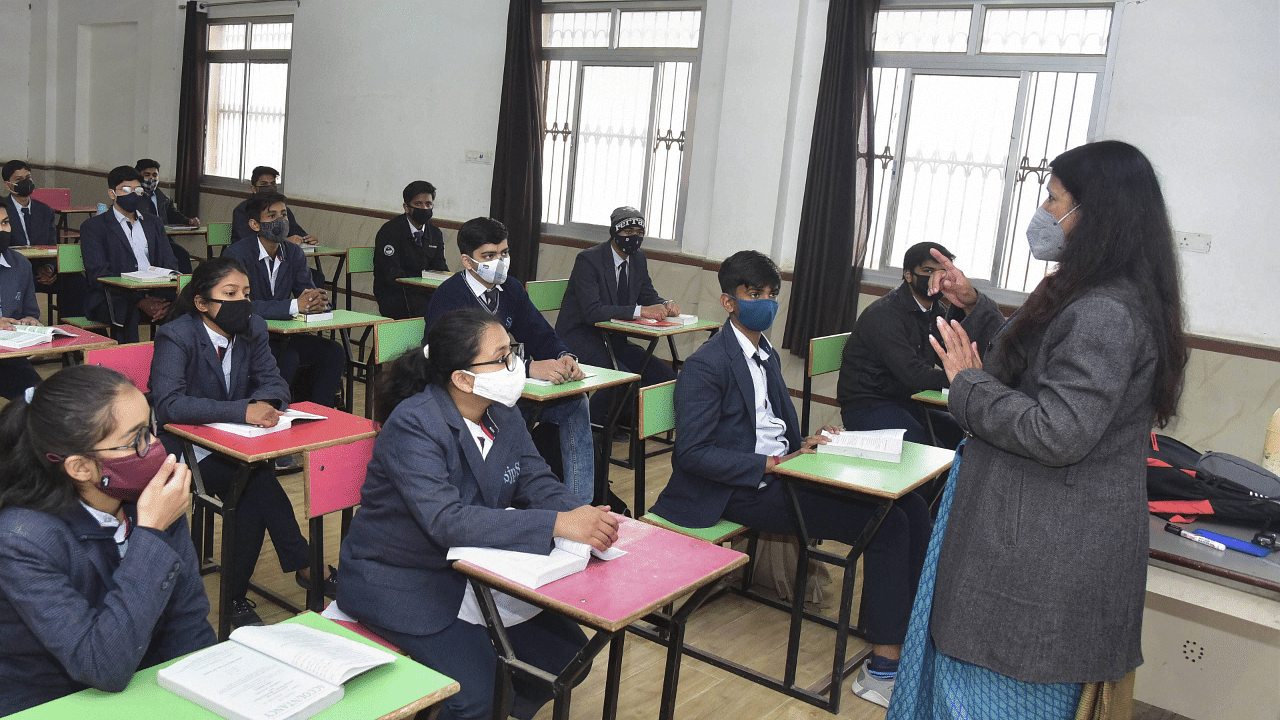
Mythological stories are almost always meant to suggest a truth metaphorically. The dictatorial king Hiranyakashipu introduced an ‘educational policy’ to be followed by every student—to consider him as worshipful God—and he did not even hesitate to attempt to kill his own son Prahlada for opposing it. Similarly, the Spartans used armed force to regulate education by destroying the liberal Athenians led by Pericles.
It is a historical fact that rulers have always attempted to control education. In ancient India, the educational policy of the Aryans demanded that the natives—Dasyus—learn according to the norms laid down by the former. Though the ancient Indian thinkers regarded education as an instrument that puts an ignorant person on an intellectual, progressive and virtuous path (tamaso ma jyothirgamaya—from darkness, lead me to light); (aano bhadrah krtvo yantu vishwatah—Let good thoughts come from all directions), the period between 1000 BC and 400 BC witnessed a struggle between Buddhism and Brahminism.
Supported by the kings and religion, while Brahminism tried to reinforce royally patronised hierarchies, the Buddhist Viharas opened their doors to all castes and became people-centric. During the Mughal period, only ‘Madrasas’ and ‘Maktabas’ were encouraged (Sitaram Yechury—1986). Making people aware and obedient to religion and the king was the major objective of all ancient societies.
Pioneering work was done in the field of education in India during the regime of East India Company. Though motivated to spread Christianity via missionaries, the company had realised the political significance of religious neutrality and refrained from carrying the directions of the Charter of 1698 meant to spread the Gospel. Reluctantly, it had to accept the Charter Act of 1813, which established in 1833, the much-abused Macaulay Commission, which was guided by the principle of encouraging the learning and literature respected by the influential classes. But it was hobbled by the politics of language–the Orientalists demanding education through Sanskrit, Arabic and Persian; and the Anglicists, led by Raja Ram Mohan Roy, demanding English education to take the country towards an age of renaissance.
Though Macaulay wanted a class of persons “Indian in blood and colour but English in opinions, morals and intellect”, he had also foreseen that Western education would bring Indians towards Indian nationalism based on Western ideas of government. Ultimately, it was Charles Wood’s report that set out major reforms in India by introducing the study of Indian literature and philosophy, along with Western science, culture and arts.
Post-Independence, the Constitution aspired to provide equal access and equity in education. The University Education Commission was appointed under the chairmanship of S Radhakrishnan (1948) with the aim to decolonise our education system. Jawaharlal Nehru contributed immensely to make science, scientific temper and secularism the guidelines to educational policy. In 1968, the D S Kothari Commission report led to a national education policy, which was subsequently updated in 1979, 1986-1992, followed by the Sarva Shiksha Abhiyan (2000) and the Right to Education Act (2009). Now, there’s the much-publicised National Education Policy (NEP) 2020. Its proponents and cheer leaders consider it a panacea for all the ills of India’s previous education policies and to make India ‘Vishwaguru.’ Its critics brand the report and the slogans accompanying it as a ‘deceit in design’, another gimmick of a government full of gimmicks.
The truth may be somewhere in-between. The need to overhaul the system is beyond doubt and the latest NEP’s pronouncements may be relevant, but the questions it brings up are more than the answers it gives.
Education has always been a tool for imposing, status-quoist, non-dynamic, religion-scripted thoughts, for the rulers to become more powerful. History abounds with stories of rulers who misused religion and culture and even economic ideology to become ever more powerful. In the contemporary era, we see nationalism and slogans of development as guidelines for educational policies. There is an attempt to ‘teach’ but to not allow to ‘learn’.
The design of the NEP 2020—5+3+4-years structure, etc.,— and catchy titles and acronyms like ‘All for All’, SAFAL, NISHTA, are superfluous in making an effective educational policy. What matters is the ‘content’ of it, not its ‘form’. History and literature become easy tools in the hands of powerful rulers. We see in our twin, Pakistan, how the children, through compulsory ‘Pakistan Studies’ are fed with fake and hate-filled understanding of mankind and how recently, many ‘Western’ educated youngsters in that country have been fighting against such brain-stunting impositions.
The question is whether the present ruling Parivar intends to be ‘exclusivist’ or ‘inclusivist’ in dealing with history and literature. History cannot be reversed, even if we are made to be ignorant of it or it is rewritten. From the times of Valmiki and Vyasa to the contemporary times, great literature has always questioned and rebelled against the system, preventing it from remaining static and singular.
If NEP 2020 can help bridge the gap between the strong and the weak, the haves and the have-nots, which has widened in the post-Covid, digital world, and encourages jignyasa (curiosity) and samvada (dialogue), with full autonomy to the academic world, we should cheer it on. One hopes that its votaries will remember the Taittireyopanishad, which shows how to bring about Vidyasandhi–the conjunction between the powerful education policymaker and the helpless knowledge-seeker.
Modern secular education, to evolve to its present state, has had to face many challenges from religious bigotry and the will of the ruling classes. Let us hear former President S Radhakrishnan, in whose honour India celebrates Teachers’ Day, “The end-product of education should be a free, creative man who can battle against historical circumstances and adversities of nature.”
(The writer is a well-known educationist)